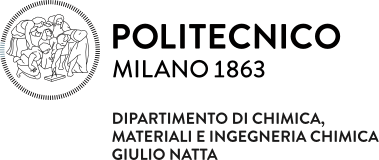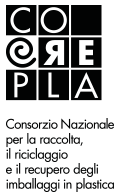Design for Recycling
Guidelines to facilitate the recycling of packaging
Design for Recycling is part of the prevention activities pursued by CONAI with a view to the “cradle to cradle” strategy, which represents an essential instrument aimed at achieving the circular economy goals.
With the purpose of obtaining guidelines which are shared and participated by the whole chain, CONAI makes available the public consultation of these, through this website, in which users can comment on, after logging in.
Guidelines to facilitate the recycling of steel packaging
The "Guidelines to facilitate the recycling of steel packaging" have been realised through collaboration between the Advanced Design Unit research group of the Department of Architecture of the Alma Mater Studiorum – University of Bologna and RICREA professionals. With the participation of ANFIMA (Italian National Association of Metal Packaging), it was possible to include within the document the perspective of steel packaging producers, as well as FIRI (Italian Federation of Packaging Regenerators), which contributed to the drafting of the chapter on regenerating industrial packaging.
The document describes in detail the industrial process within the steel supply chain, and provides useful guidance for packaging managers with the aim of further improving the recyclability of steel packaging.
The steel recycling process is highly efficient, however, an in-depth understanding of the different phases of the life cycle of this material allows us to reconsider the approach to packaging from a broader and more conscious perspective.



Design for recycling guidelines for paper packaging
Design for recycling guidelines for paper packaging have been realized thanks to the collaboration between the research team from the Chemistry, Material and Chemical Engineering “Giulio Natta” of Politecnico di Milano, and the experts from COMIECO. Collaboration with the whole chain has been crucial, from the paper factories to the companies that contributed to the document with their specific know-how and witnesses.
The document describes the peculiarities of paper packaging, the different kinds of packaging material and their characteristics. Detailed analysis of the collection, selection and recycling processes sheds light on the points of attention for each stage, bringing out the design for recycling guidelines.



Guidelines to facilitate the recycling of aluminium packaging
The “Guidelines to facilitate the recycling of aluminium packaging” are the result of a collaboration with the research group of Politecnico di Torino and the support of professionals from CiAl.
This document analyses the selection and recycling phases of the aluminium packaging with the aim of
identifying which elements of the processes deserve attention and are to be considered in the designing phase, in order to optimize the recycling processes and to reduce the related environmental impacts.
The guidelines are enriched with designing indications and considerations on characteristics and
recyclability for specific types of packaging.



Guidelines to facilitate the recycling of plastic packaging
"Guidelines to facilitate the recycling of plastic packaging" arise from the cooperation with the Design research group from Iuav University of Venice and the support of professionals from Corepla, in order to analyse each phase of sorting and recycling of plastic packaging, with the aim of highlighting issues and peculiarities of processes to give effective design indications. Guidelines are accompanied by two checklists, useful to designers willing to make more recycling packaging.
With the aim of sharing the design indications with the different players of the chain, this document had been subject to a public consultation on this website until January 31, 2017. Thanks to the participation and cooperation of a large number of users,
Guidelines to facilitate the recycling of plastic packaging are the result of a synergistic cooperation of the whole packaging chain.
This website will continue over time to gather suggestions and reporting from users, with the view of continuous improvement of the guidelines.


